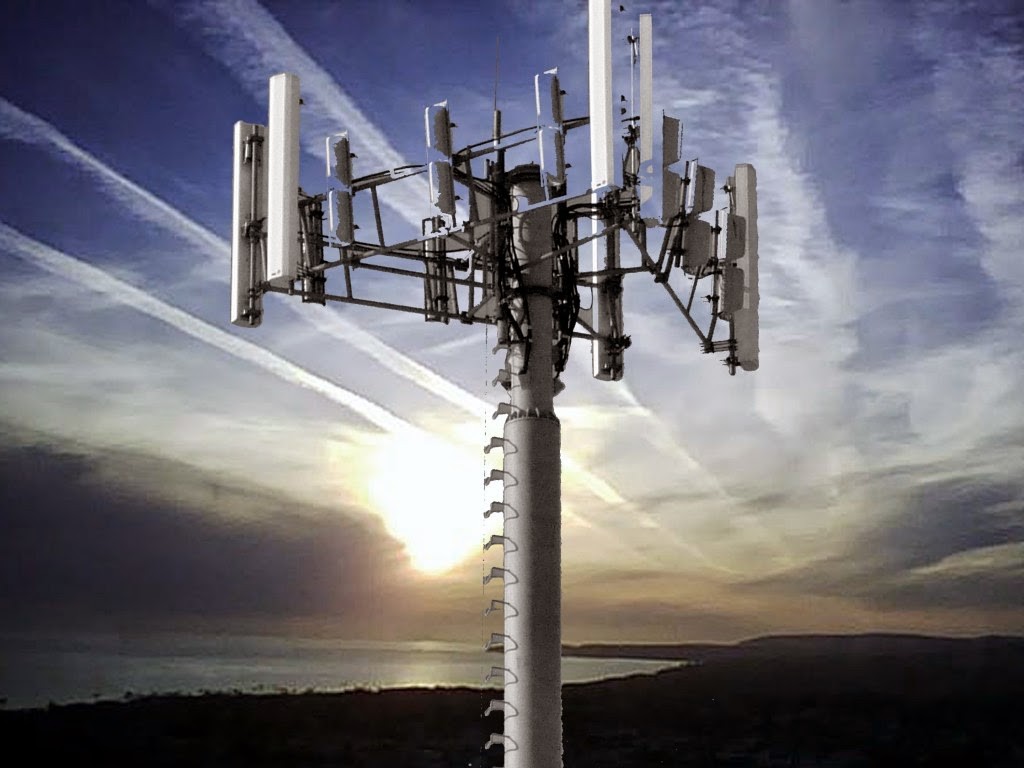Are usually safest distance from a 5G cell System?

If you've ever been through a city you might have noticed tiny 5G cell towers on street light poles. They appear like tiny boxes however, they're actually transmitting wireless signals from cell phone providers to your phone.
They are replacing the larger specially-designed cell towers. While they're less noticeable however, they could cause problems for people.
A FCC's Radiation Exposure Thresholds
The FCC's Radiation Exposure Thresholds define the safe limit at which an individual can be exposed to electromagnetic energy generated by wireless devices. The exposure limits are based on scientific data which show that the energy of RF could be harmful to human health.

The specific absorption rate (SAR) is an indicator of the amount of radiofrequency energy absorbed by tissue. It's typically 1.6 milliwatts per kilogram spread over a Gram of tissue.
But, since 5g operates at higher frequencies this could be able to increase the intensity of energy on the skin and other directly-exposed body areas. safe distance from cell tower can lead to many potential problems, including an increased appearance of skin disorders like dermatitis, skin cancer and cataracts.
Because of the potentially severe effects of 5g radiation, PSU has chosen to create a general limits on power density, which is 4mW/cm2 averaged over 1 cm2, and never exceeding 30 minutes for all 5G services at 3000 GHz. This localized limit is in accordance with the highest SAR that is spatially averaged at 1.6 W/kg averaged over 1 grams of tissues at six GHz.
The FCC's Maximum Exposure Thresholds for Maximum Exposure
In the event that you've used mobile phone, you probably know that a safe range from the tower should be at least 400 meters. This is because the transmitting power of cell towers increases drastically the further you are from it.
While this sounds like a good idea but the truth is that people who live close to towers might be more susceptible to health problems. For instance, a study conducted in 2014 in India found that residents living within 50 meters of cell towers had much more health problems than those who were far from antennas.
This study showed that residents who moved to areas that were further from the cell towers saw their symptoms improve within a couple of days. Another study has revealed that exposure to high amounts of electromagnetic field radiofrequency (EMFs) can cause brain tumors, cancers and other health issues.
This is due to the fact that RF radiation, which is utilized in wireless communications, can penetrate the human body's outer layer, which is the skin. what is a safe distance from a cell tower is important to understand because the skin serves as a barrier to protect against injuries caused by mechanical forces, infections caused by pathogenic microorganisms and entry of toxic substances. Additionally, it is the biggest organ in the human body, and is responsible for keeping the integrity of other organs.
The FCC's Minimum Exposure Thresholds for the Minimum Exposure
The FCC's Minimum Exposure Thresholds are based on various assumptions that aren't supported by scientific research. This includes the false belief that short-term exposures RF radiation is safe due to minimal absorption into body (i.e., tissue heating).
This assumption does not take into account the greater penetration of ELF parts of the modulated RF signal and the effects of short bursts of heat from pulsed RF waves. These assumptions do not correspond with the current understanding of biological consequences of RF radiation, and thus, they should not be relied upon for health-protection exposure standards.
Furthermore to that, ICNIRP and FCC are limiting its maximum levels of radiation exposure for local peak SARs, based on the maximum spatial specific absorption rate (psSAR) which is not a sufficient dosimetric tool to assess the amount of exposure to RF radiation. In particular the psSAR tool is not accurate for frequencies above 6 GHz. In addition, psSAR is not been tested for RF radiation exposed to other environmental agents , such like sunlight. In the event of interactions, RF radiation with other environmental agents may produce synergistic or antagonistic effects. https://www.openlearning.com/u/upchurchchoi-rtp58t/blog/WhatLengthsShouldIStayFromYour5GMobileTower could result in an increased risk of adverse health effects. For example, co-exposure to RF radiation along with exposure to sunlight can cause an increase in the incidence of skin cancer and exacerbate other skin disorders, such as acne.
